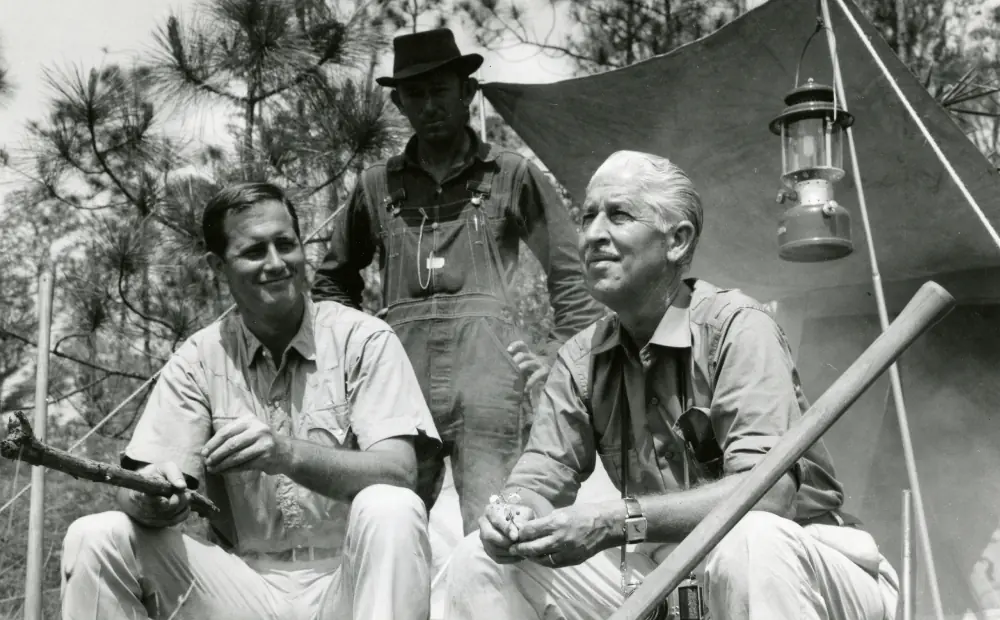0:01
The Puget Sound in Washington state, home to a dazzling array of marine life such as playful sea otters, sleek harbor seals, speedy porpoises, and orcas, famously known as killer whales.
0:17
Off we go out here in the gorgeous Pacific Northwest, even harbor at the ferry, and it has to meet with our whale research wrestler.
0:25
I am so excited to see my first killer whales up here.
0:30
I'm visiting the San Juan Islands to meet up with Dave Illafrit from the Center for Whale Research.
0:35
Let's go find some whales.
0:39
Today I'll be helping Dave with his annual identification survey of the local orca population.
0:44
This study has been going on for nearly 50 years now, and we've been taking identification shots for that long.
0:50
And over the years we've been able to watch these whales grow up, we’ve been able to figure out their relationship to one another, and so we've been able to put together these family trees.
1:00
The way we identify whales, size and shape of their dorsal fin.
1:03
Any Nicks on their dorsal fin?
1:05
The Gray area behind the dorsal fin is called a saddle patch, and they vary in shape and size.
1:11
Are they different, like people's fingerprints?
1:14
Exactly.
1:14
They are fast, intelligent and deadly.
1:20
Orcas live in all the world's oceans.
1:23
They stay in tightly knit family groups of 2 to 15 whales nestled within larger communities, and they established deep family bonds.
1:33
Offspring will stay with their mother for years or sometimes their entire lives.
1:40
It wasn't long before the crew spotted a pot of orcas.
1:44
Dave and I rushed up to the deck.
1:45
Look at it.
1:46
You get her and blowing from here.
1:49
Could you tell me who we're looking now?
1:50
OK.
1:51
Yeah.
1:51
This is a group that's very well known.
1:53
We have seen both these big guys since they're little itty bitty calves, and the little, smaller whale is both of their mother.
2:00
So just in a glance, we're looking at the Dorusal Fid.
2:03
You realize that's a female and two adults.
2:06
Yeah.
2:07
Oh, look at that.
2:07
Right here, right up here.
2:09
This pod we're observing belongs to a distinct orca ecotype called bigs, or transient orcas.
2:17
They're nicknamed killer whales for a good reason.
2:19
They're the apex predators of this underwater realm.
2:23
Their menu primarily features large mammals.
2:27
They're out here looking for harbor seals and sea lions and harbor porpoise.
2:31
They are large predators, and they can take out large prey when they want to.
2:36
We watch this resilient mom, and her two sons swim off to hunt, socialize and play.
2:43
And then we encountered some of the big killer whales, preferred prey, a species well known for being quite vocal.
2:50
I can hear the stellar sea lions over here.
2:53
Yeah, these are stellar sea lions.
2:54
These are the largest sea lions in the world.
2:57
These guys are on the menu for big killer whales.
3:01
These guys are big, tough animals.
3:03
And when a group of killer whales attacks one it, it can take hours.
3:09
Dave's main target for his survey is a completely different eco type of killer whale called resident orcas.
3:17
These whales are salmon specialists and tend to have small home ranges near large salmon populations.
3:24
It's a yearly census.
3:26
Currently we're at 7374 whales.
3:30
And while transient orca populations are stable, the resident orcas here in Washington are endangered.
3:37
The reason?
3:38
In the 60s and 70s, a large number of resident orcas were taken from their families in the Puget Sound, destined for the tanks of distant aquariums and marine parks.
3:50
And since then, endangered resident orca populations have not recovered.
3:54
The primary reason?
3:55
Their main food source is also endangered?
3:58
Large, energy rich Chinook salmon.
4:01
The major difference, if I'm understanding, is the residents are here.
4:06
They're feeding predominantly on salmon.
4:07
Yes, the salmon they're going after are the fattiest of the salmon they can find, but they're so few Chinooks at the moment that they're really kind of struggling.
4:16
And do they choose the Chinook because they're the largest in the fattiest?
4:19
Yes.
4:20
There's more bang for the buck.
4:21
We need salmon habitat restoration.
4:24
It's not the only problem that there are residents have, but it's the main one.
4:28
Is pollution an issue?
4:30
Pollution's a big issue.
4:31
These whales are loaded with contaminants, a lot of forever chemicals, which builds up in their blubber layer, especially with our residents who are not always getting the food that they need.
4:42
With so few resident orcas left, it was no surprise that we did not find a single one during our survey.
4:50
Dave's important work will continue gathering vital data that conservationists can use to manage both killer whale populations.












